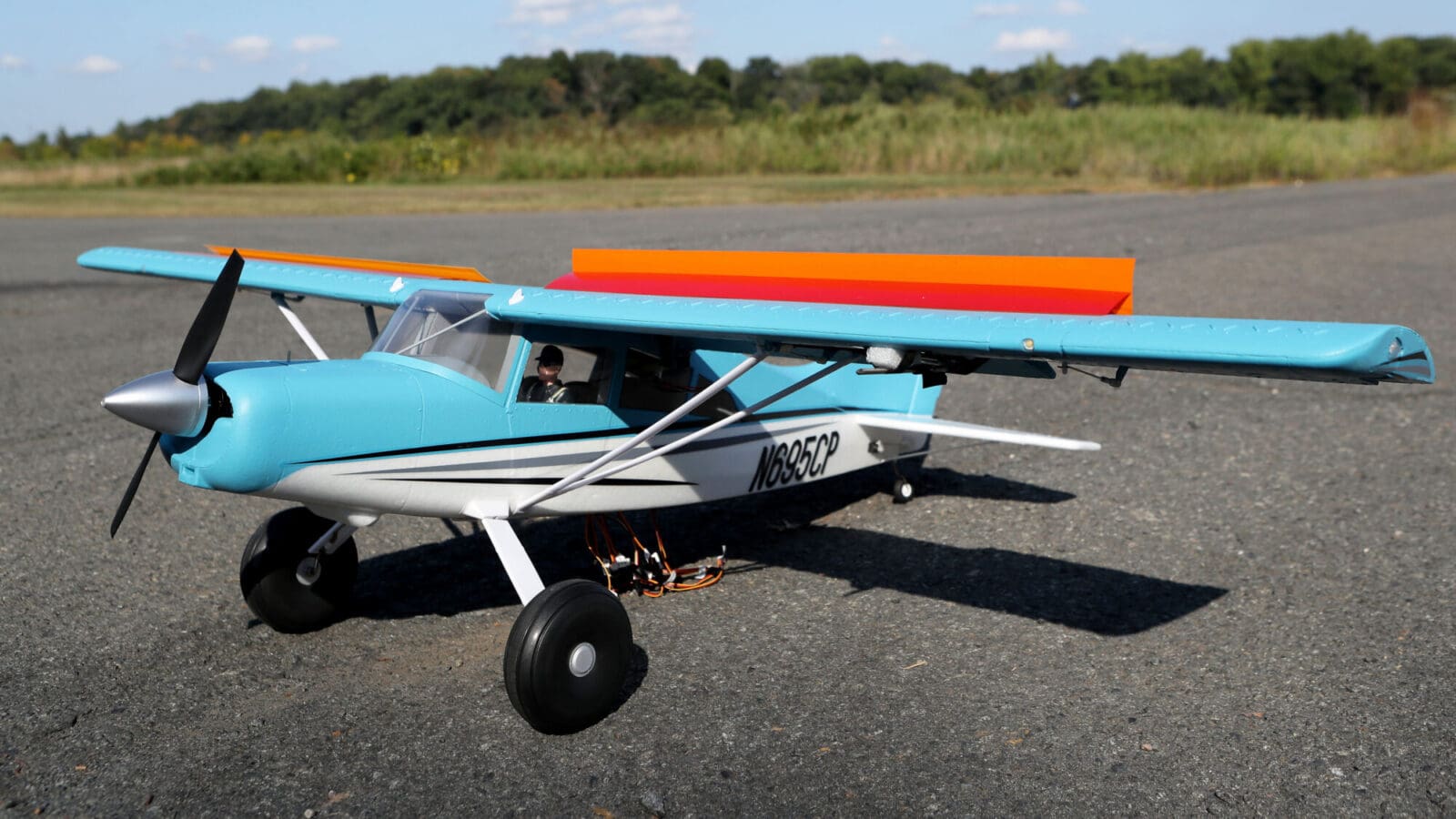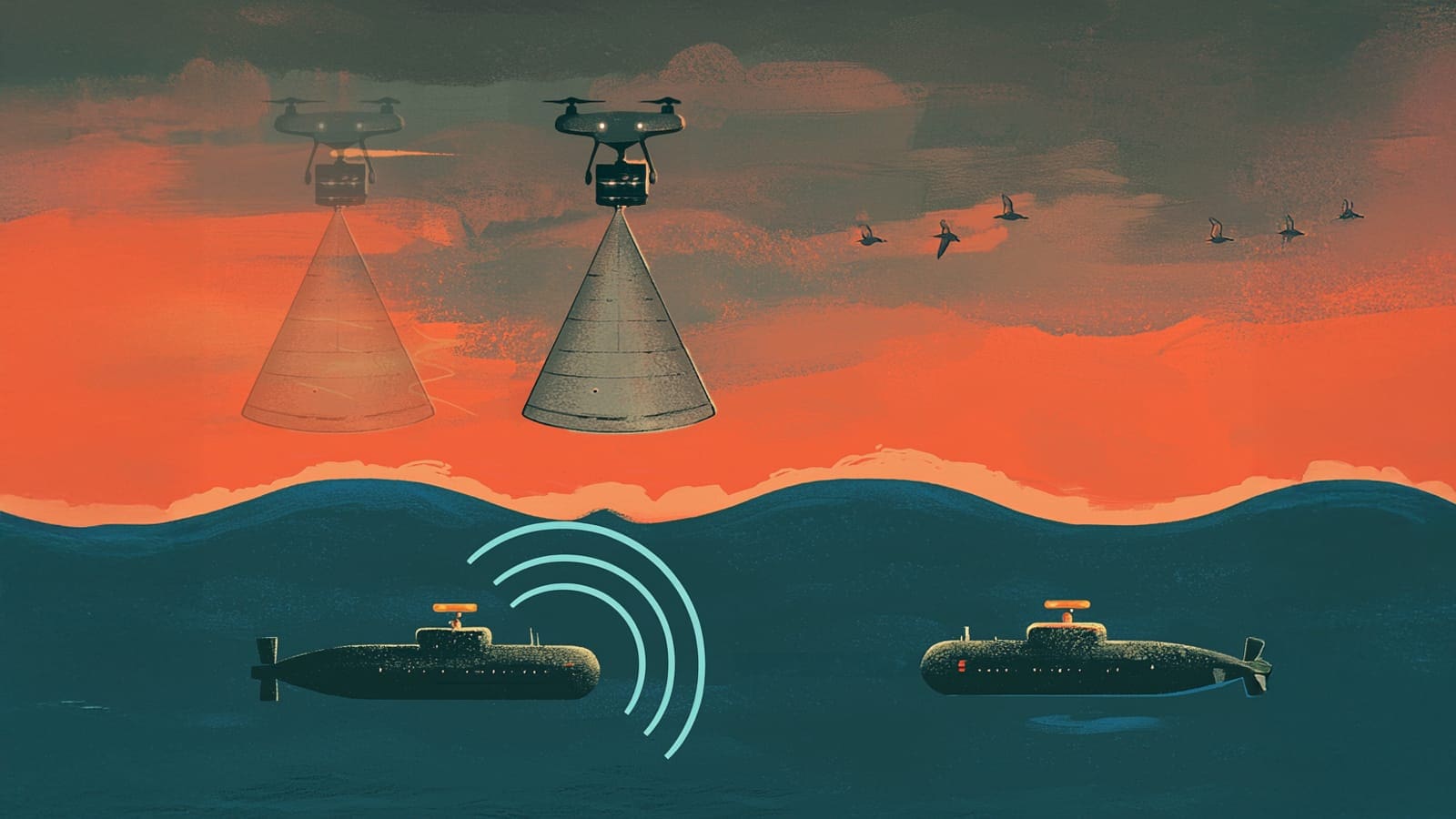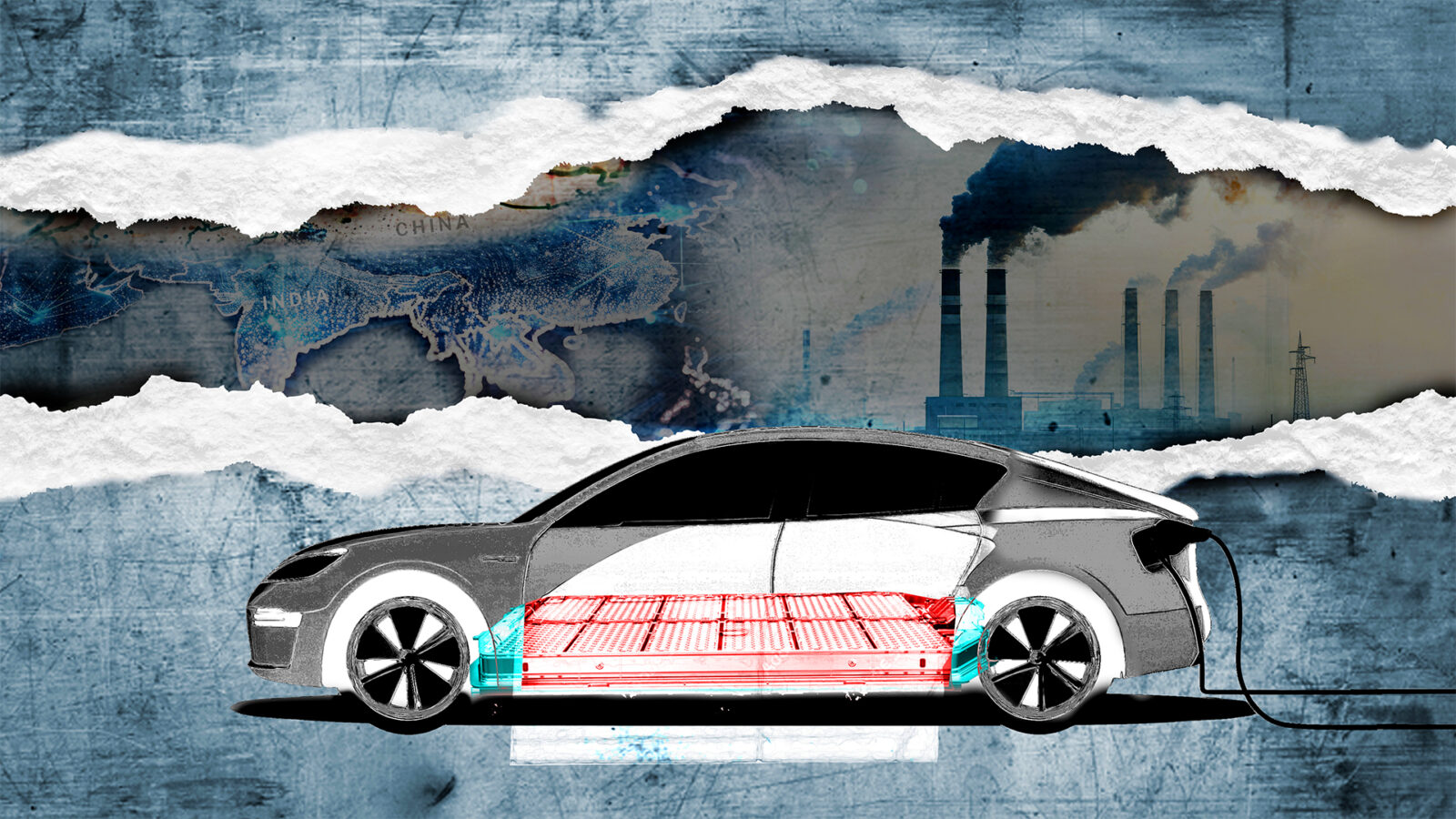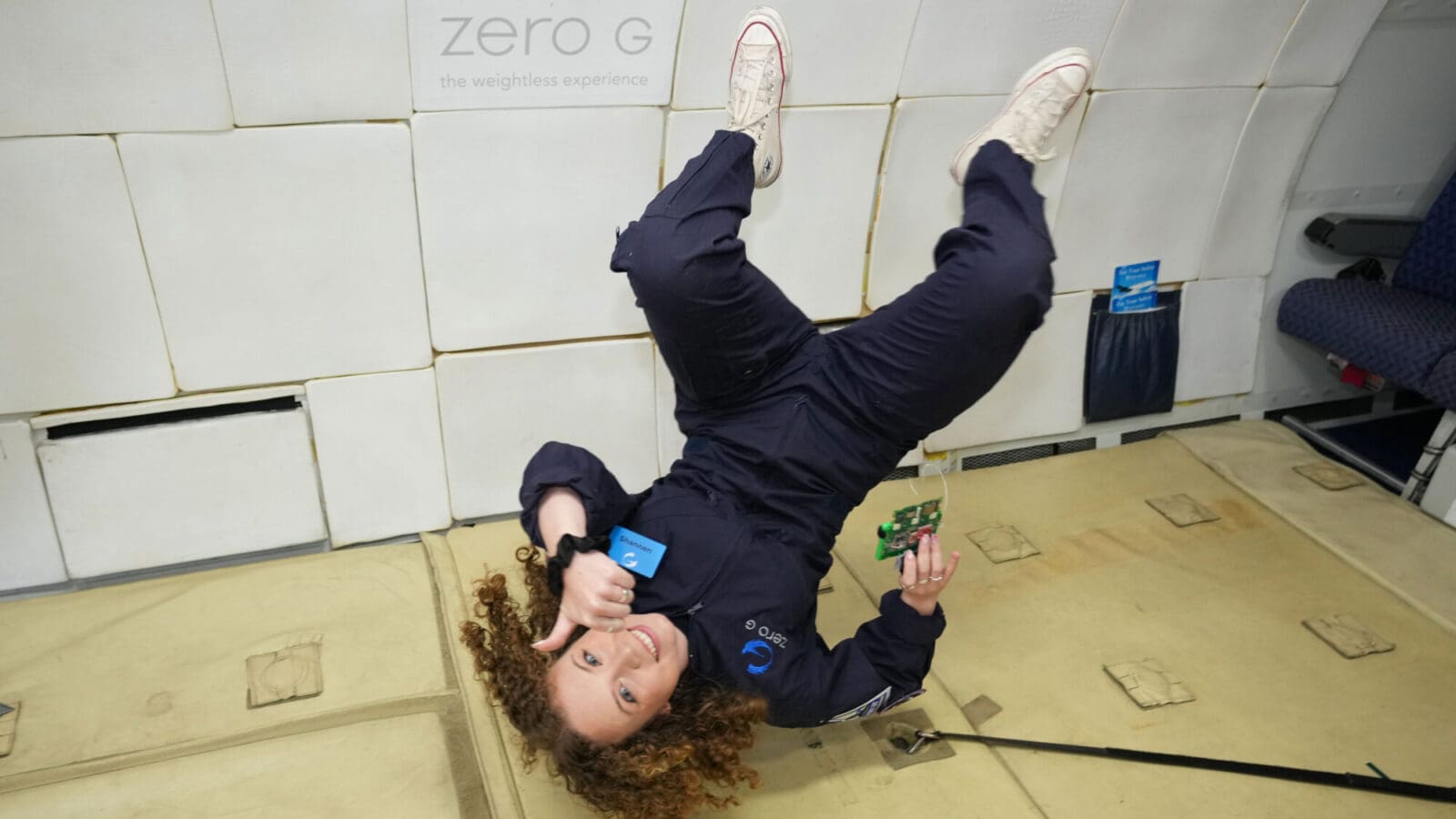
Part Nine: Air and Space
By
on
This is from the series E100: Princeton Engineering’s 100th anniversary
#50
“Whoopie! Man, that may have been a small one for Neil, but that’s a long one for me.” – Pete Conrad ‘53, upon stepping on the moon.
To mark the halfway point of this series, we point to the celebrated contributions of Charles “Pete” Conrad ‘53. On November 19, 1969, Conrad, who studied aeronautical engineering, became the third man to set foot on the moon, and is the only Princetonian to do so. He was a Naval aviator before joining NASA during the space race. He carried several small Princeton flags with him as commander of the Apollo 12 mission, including one that lives in the university’s archives. He also brought a tape deck, to entertain the crew with Elvis, Dusty Springfield, and classic country music. The mission was the first after the heralded Apollo 11 mission earlier that year. Conrad, who was known for his sense of humor as much as his love of flying, went on four space missions in all. He died after a motorcycle accident in 1999 at the age of 69. Although he was the only Princetonian on the moon, a number of our graduates have gone into space with NASA. Today, the Department of Mechanical and Aerospace Engineering has continued to send its research and graduates to the national space agency.
#51
Which Princeton grad commanded the final mission taking astronauts to the Skylab Space Station?
After the Apollo program wound down, NASA turned its attention to Skylab, its first space station. Three crews of three men apiece lived onboard the station for 28, 56 and 84 days, during which they conducted experiments in biomedical and life sciences, materials processing, astronomy and more. During the last of these trips in 1973 through 1974, a Princeton graduate commanded the mission. Who was he?
Gerald “Jerry” Carr earned his doctorate in aeronautical engineering from Princeton in 1962. He launched toward the Skylab space station along with Edward Gibson and William Pogue on November 16, 1973, and returned February 8, 1974. At the time, their 84 days in space was the longest flight in the history of human space travel. Fittingly, the mission was designed to test the effects of long-duration space flight on the body. During this mission, Carr took a seven-hour spacewalk, likening it to the thrill a child gets from “climbing as high as he can up a tree and being able to see the whole neighborhood,” as he wrote in his journal. After Skylab, Carr worked on cockpit design for the space shuttle program. Carr wasn’t the only Princeton grad to participate in a Skylab mission. Charles “Pete” Conrad ‘53, commander of the Apollo 12 mission to the moon in 1969, commanded Skylab 2 in 1973, the first human mission to the space station. (The first mission had no crew.) Gerald Carr died at the age of 88 in 2020.
#52
“I certainly enjoyed going to space vicariously… Every time I look at the moon, I think, well, I helped mankind set foot on the moon.” — Robert Stengel *68.
It was a small but vitally important aspect of the Apollo 11 mission in 1969, the famous flight that culminated in Neil Armstrong climbing down the ladder from the capsule and taking mankind’s first step on the moon. But before he could take that “one giant leap for mankind,” he needed to land the lunar module down on the moon’s surface. The craft’s manual control system was designed by Robert Stengel *68 while he was at the MIT Instrumentation laboratory (now the Draper Lab). Using a hand controller, Armstrong was able to navigate around a previously unseen field of boulders and safely land the capsule on the moon’s surface with about 20 seconds of fuel left to spare. The manual control technology was used for all subsequent U.S. moon landings. Stengel joined the Princeton mechanical and aerospace engineering faculty in 1977, where he conducted research on flight dynamics and control, meteorological hazards to flight, air traffic management, and biological applications of systems theory. He transitioned to professor emeritus in 2020.
#53
Who was the founding faculty member of the aeronautical engineering department?
What we know of today as the Department of Mechanical and Aerospace Engineering was once two separate entities. Mechanical engineering was one of the original departments when the School of Engineering was founded in 1921. During the World War II years, Dean Kenneth Condit and others expressed interest in adding aeronautical engineering. In 1942, a member of the U.S. Civil Aeronautics Board came to Princeton and conducted a two-month survey, recommending to Condit that the school create a freestanding aeronautical engineering department. Condit then hired this MIT faculty member and airplane buff to run the fledgling department as chair and its sole faculty member. This professor went on to grow the faculty, which would do remarkable research, mostly at a new Princeton satellite campus that he worked to acquire and develop. Who was this professor?
Daniel Clemens Sayre, who arrived at Princeton from the MIT aeronautical school faculty in 1942, founded the Princeton Department of Aeronautical Engineering that year as its sole faculty member, with a desk on the balcony of the mechanical engineering laboratory. His previous work included setting up the Boston Airport Corporation, and establishing commercial air service between Boston and New York. Amid the backdrop of World War II and its aftermath, he recruited the department’s first batch of faculty that would form its core in the coming years, including Courtland Perkins, who would succeed him as chair, and would continue the department into its heyday in experimental flight research. (See fact #9, about another of these early hires, helicopter pioneer Alexander Nikolsky.) One of Sayre’s most visible contributions was developing top research facilities, including the purchase of a satellite campus, which he ran, and which we will discuss in fact #54. Upon his untimely death from cancer in 1956 at age 53, Sayre was working on the next phase of the department’s journey: The planned new Engineering Quadrangle. That’s worth noting as the School of Engineering and Applied Science looks to its next home, which we will also discuss in a future fact. “Dan Sayre was a very special person,” said University President Harold Dodds upon his passing. “He will be sorely missed.”
#54
“It would solve our space problems for all time, but we would be four miles from the main campus…” – Courtland Perkins, on the Forrestal Campus.
It was, as second department chair Courtland Perkins would call, the “Cinder Block Era” for the young Department of Aeronautical Engineering at Princeton: Top research in flight, accompanied by the roaring sound of test engines and wind tunnels, was being conducted in the jam-packed temporary buildings that hardly conformed to Princeton’s grand architecture, much less providing space for an aircraft runway. The department needed more space. In a history of the department co-written with Alexander Smits, Perkins recalled teaching a course at Green Hall, then the main engineering building, in 1950 when founding department chair Dan Sayre poked his head in, told him to dismiss the class and follow him. They got in Sayre’s car and drove out to Route 1, to the grounds of the Rockefeller Institute for Medical Research. The 825-acre facility was being closed and put up for sale. Princeton purchased the land, and the satellite campus opened in 1951, named for the first United States defense secretary, James Forrestal, Class of 1915. Labs from the department moved onto the new satellite campus and were able to spread out, like the wind tunnel and Alexander Nikolsky’s rotor dynamics lab, and a runway and hangars were built. Labs at Forrestal in its early years also included gas dynamics, propulsion, and low-speed aerodynamics. Other university programs also moved onto the satellite campus, including fusion research, which continues there today at the Princeton Plasma Physics Laboratory, a U.S. national lab managed by Princeton. Despite the drawback of distance from the main campus, the new Forrestal facility set the department up for its greatest period of growth, paralleling the space race, and benefitting from government investments in aerospace research.
#55
In what year did the departments of Mechanical and Aeronautical Engineering merge?
By the early 1960’s, the Department of Aeronautical Engineering, based at the new satellite Forrestal Campus, was experiencing a heyday. As military and foundation funding poured in, faculty did important research in areas like electric propulsion (future dean Robert Jahn), rotor dynamics (Pat Curtiss), high-speed flight (future department chair Seymour Bogdonoff and Wallace Hayes), low-speed flight (David Hazen), and more. Meanwhile, the Department of Mechanical Engineering — one of the original departments upon the founding of the School of Engineering in 1921 — had fallen upon hard times, as student demand for its offerings dropped, and new technology research had gone to Aerospace. Mechanical agreed to merge with Aerospace, a decision that would lead the merged department’s activities largely back to the main campus, reorient some of its research, and set up what continues to be one of the top mechanical and aerospace programs in the world. What year did these two departments merge?
With Aerospace Engineering flourishing and Mechanical Engineering struggling, the two departments announced a merger on May 31, 1964. Aerospace’s chair, Courtland Perkins, took on the leadership of the merged department, which would go by the name Aerospace and Mechanical Sciences. This occurred amid the backdrop of the 1962 opening of the sprawling new Engineering Quadrangle, and at first Perkins maintained offices in both the EQuad and the satellite Forrestal Campus, where Aerospace was conducting a wide array of innovative research. Slowly, however, the merged department’s operations moved to the EQuad, allowing it to rejoin the main campus’ research community, but weakening the esprit de corps that had grown among aerospace researchers at the sprawling Forrestal Campus. While the department continued to grow, it joined the rest of the school in focusing on the fundamentals of engineering and applied science. The department adopted its current name, Mechanical and Aerospace Engineering, in 1978 to better align with national trends and to help with recruiting, and remains one of the top MAE programs in the world.
#56
“With all its flaws, America still is the land of limitless opportunity and near infinite possibilities.” – Eli Harari *73
Born in Tel Aviv in 1945, Eli Harari first visited the United States at age 13 when he travelled with his parents to a wedding in Brooklyn. He recalled being dazzled by New York, and after going to school in England and serving in the Israeli military, he returned to the United States in 1969 to attend Princeton Engineering, where he would receive a doctorate in mechanical and aerospace engineering in 1973. It was the year America landed on the moon, and he studied why electronic devices on satellites in space were failing. Later working at a microelectronics research center in California, he spent his evenings working on inventions. One such idea was for computer storage technology with no moving parts and requiring no external power source. He would go on to create SanDisk, “system flash” memory technology now used in devices from memory cards and USB drives to mobile phones, tablets and laptops. In a 2010 interview with Princeton, Harari said: “A successful inventor basically recognizes a deficiency or some kind of need and comes up with a solution, and files a patent. Ideas are great, but ideas are really a dime a dozen. Taking that one idea that’s going to change the world, and actually changing the world, is what an entrepreneur strives to achieve.” He was honored by President Barack Obama in 2012 with the National Medal for Technology and Innovation. As an immigrant himself, he remains an advocate for bringing new people and new ideas into this country “to be its source of energy, diversity, optimism, passion, hope, and willingness to work hard and make the sacrifices needed to ensure a better America and a more sustainable Earth for their children and generations to come.”






